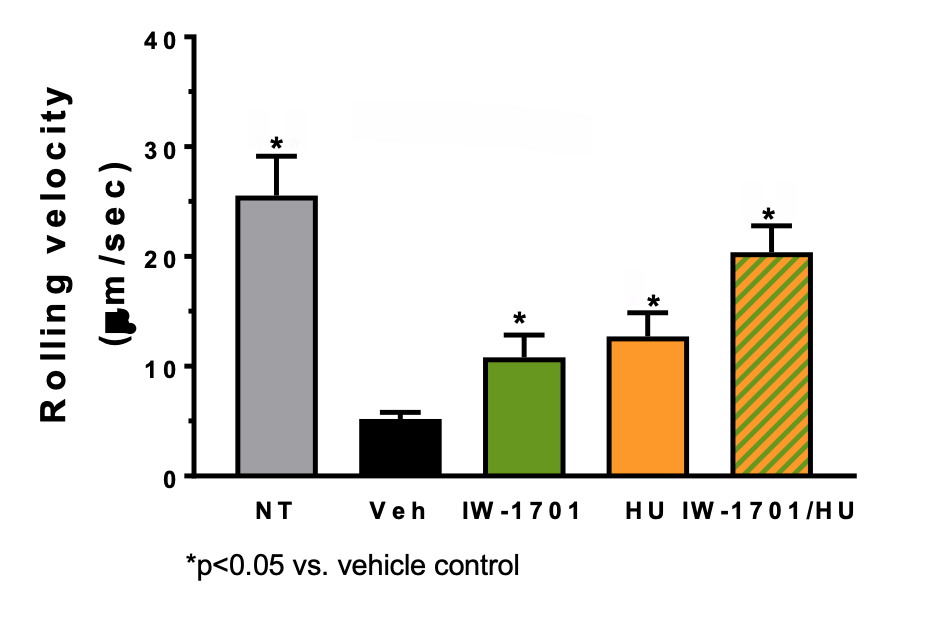The Clinical-Stage sGC Stimulator IW-1701 Prevents Increase of Plasma Biomarkers of Intravascular Inflammation and Suppresses Leukocyte-Endothelial Interactions in Tnfα-Treated Mice
59th American Society of Hematology (ASH) Annual Meeting and Exposition (2017)
This research describes the effects of olinciguat on markers of vascular inflammation in a preclinical model.
Olinciguat alone and in combination with hydroxyurea attenuated the effect of TNFα on leukocyte rolling velocity in a mouse model of intravascular inflammation

As a physiological consequence of vascular inflammation and endothelial activation, leukocyte rolling along the vascular wall slows. The speed of leukocyte rolling can be measured in vivo in the vasculature of mice via intravital microscopy. We measured the effect of olinciguat on leukocyte rolling velocity in the venous microcirculation of a mouse model of inflammation in which leukocyte activation was induced by treatment with the proinflammatory cytokine TNFα. Olinciguat was evaluated both alone and in combination with hydroxyurea, the standard of care in SCD. Mice pretreated with either olinciguat or hydroxyurea had significantly faster leukocyte rolling velocities compared with TNFα controls (Veh). The effect was even greater when olinciguat and hydroxyurea were given in combination, with the velocity approaching that of the naïve group (NT). Tchernychev (ASH 2017) oral presentation

 Return to Archive
Return to Archive